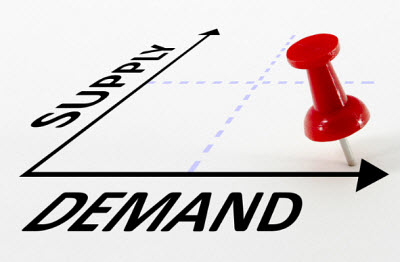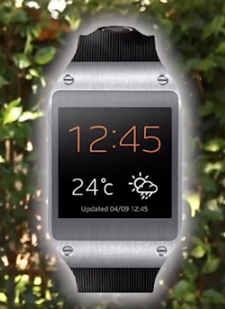The latest data regarding sales transactions over smartphones and tablets have shown massive growth.
The findings of an analysis conducted by Capgemini and IMRG have shown that the sales transacted over mobile commerce have reached a point that they are far hotter than they have ever been.
In fact, the report shows that the current figures are leading 2013 to be a year that is double last year.
The trend revealed by the recent mobile commerce report indicated that it is becoming ever more urgent for retailers to make sure that their websites have been optimized for the screens and navigation available on smartphones and tablets. Soon, this will also include high tech smartwatches with even smaller screens.
The data from the report showed that 23.2 percent of online shopping in the second quarter from mobile commerce.
 This is a notable increase when compared to the mobile commerce figure from the same quarter in 2012, which was 11.6 percent. This indicates that it could be highly beneficial for retailers and other companies to recreate a version of their website that is meant specifically for smartphones and tablets. This way, no matter what device the consumer happens to prefer, all of the content will be easily available, improving the experience of the visitor.
This is a notable increase when compared to the mobile commerce figure from the same quarter in 2012, which was 11.6 percent. This indicates that it could be highly beneficial for retailers and other companies to recreate a version of their website that is meant specifically for smartphones and tablets. This way, no matter what device the consumer happens to prefer, all of the content will be easily available, improving the experience of the visitor.
That said, there are also some retailers who are approaching mobile commerce with a tactic preferring “responsive” websites. Those are sites that are designed to display themselves properly on whatever screen is used. Though effective, it is an increasingly expensive effort, which can cost anywhere from $5,000 to $25,000 with additional upfront costs based on the specific design itself and the functionality that is desired.
The compatibility of a website with mobile commerce users is very important, as there are only under 3 seconds available in which to make a good impression with a visitor before he or she will become impatient and simply move on to a competitor’s website. Despite the fact that mobile internet connections are tremendously slower than those for most desktops, consumers still expect the same performance speeds from the websites that they visit on their smartphones.
It is expected that they could soon become more popular than wearable fitness devices.
Wearable gadgets such as Galaxy Gear from Samsung and the smartwatches that are being designed by many major smartphone manufacturers could soon be providing the fitness device market with some considerable competition.
Many believe that these new devices, combined with the right apps, could outshine everything else out there.
It is expected that smartwatches could be a single gadget that could carve out the mhealth marketplace and – armed with the right fitness apps – may replace nearly all other forms of wearable fitness device. The Samsung Galaxy Gear smartwatch is only one of a rapidly growing category of devices that can be worn. In the case of that specific device, it comes with several apps already built in.
The apps in those gadgets could prove to be highly appealing to fitness enthusiasts.
 When paired with certain similar gadgets that have already been announced from other major manufacturers such as Sony, and that are expected to be announced from both Qualcomm and Apple, it may be that Galaxy Gear will have a sizeable influence on the mhealth app marketplace. Experts in the industry say that it all depends on the evolution of the technology.
When paired with certain similar gadgets that have already been announced from other major manufacturers such as Sony, and that are expected to be announced from both Qualcomm and Apple, it may be that Galaxy Gear will have a sizeable influence on the mhealth app marketplace. Experts in the industry say that it all depends on the evolution of the technology.
At the moment, Galaxy Gear has approximately 60 apps available. This is notable, considering that the first of these gadgets won’t ship until September 25, 2013 and that their retail price will be $299. One of the apps that is likely to become quite popular among fitness enthusiasts who own this device will be the step-counting accelerometer. Its owners will also receive an Azumio customized app that can be used for measuring their calorie burning, monitoring their heart rate, and even snapping pictures of the foods that they are consuming, through the use of the camera that is built into the Gear.
These gadgets can be combined with other mobile communications devices – such as smartphones and tablets – and will then become capable of surfing the web, sending email, and accessing social media. That last feature is expected to be combined with certain apps that will “gamify” their fitness through sharing achievements in weight loss, walking, running, and other areas.
 This is a notable increase when compared to the mobile commerce figure from the same quarter in 2012, which was 11.6 percent. This indicates that it could be highly beneficial for retailers and other companies to recreate a version of their website that is meant specifically for smartphones and tablets. This way, no matter what device the consumer happens to prefer, all of the content will be easily available, improving the experience of the visitor.
This is a notable increase when compared to the mobile commerce figure from the same quarter in 2012, which was 11.6 percent. This indicates that it could be highly beneficial for retailers and other companies to recreate a version of their website that is meant specifically for smartphones and tablets. This way, no matter what device the consumer happens to prefer, all of the content will be easily available, improving the experience of the visitor.
 When paired with certain similar gadgets that have already been announced from other major manufacturers such as Sony, and that are expected to be announced from both Qualcomm and Apple, it may be that Galaxy Gear will have a sizeable influence on the mhealth app marketplace. Experts in the industry say that it all depends on the evolution of the technology.
When paired with certain similar gadgets that have already been announced from other major manufacturers such as Sony, and that are expected to be announced from both Qualcomm and Apple, it may be that Galaxy Gear will have a sizeable influence on the mhealth app marketplace. Experts in the industry say that it all depends on the evolution of the technology.